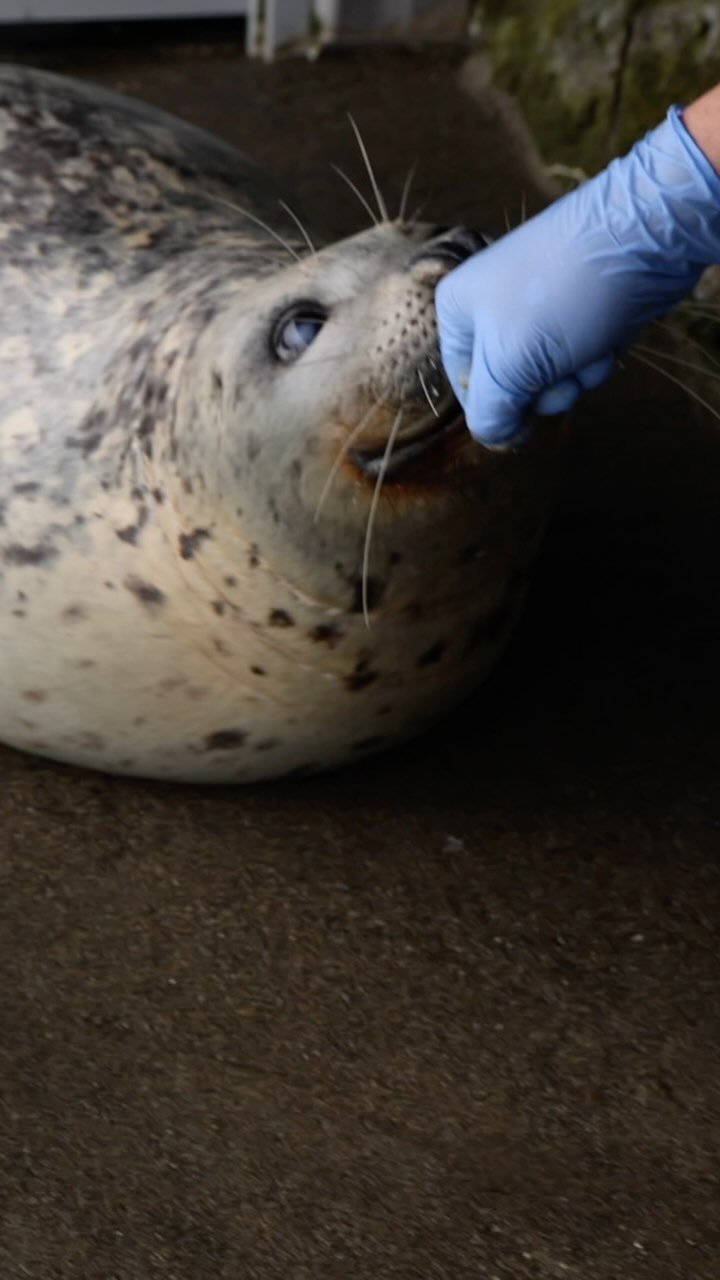- The life and legacy of Barney, the harbor seal, highlighting his role as a long-term marine ambassador.
- Insights into animal care techniques and veterinary practices that contributed to Barney’s longevity and quality of life.
- The impact of aquarium conservation efforts on public understanding and species preservation.
- Reflections from caretakers and visitors to emphasize Barney’s lasting influence on marine conservation.
- The importance of educational outreach in aquariums, using Barney as a case study.
One week ago, the aquarium community bid farewell to Barney, a harbor seal whose legacy has left an indelible mark on marine conservation. He spent nearly 40 years captivating visitors and playing a crucial role in marine life education. Barney was not just a resident at the aquarium; he was a symbol of what thoughtful animal stewardship can achieve. This article serves to explore the distinct facets of his existence and the broader implications for wildlife conservation and public education.
Barney’s extended stay in human care isn’t a common occurrence, as harbor seals typically live around 25 to 30 years in the wild. Reaching the ripe age of 40 is a testament to the rigorous care he received and the conducive environment created by dedicated professionals. Harbor seals, scientifically known as Phoca vitulina, are pinnipeds known for their adaptability and resilience. In natural settings, seals face numerous challenges such as predation and environmental changes, factors which significantly affect their lifespan.
The level of care and skill provided to Barney showcases the sophisticated techniques employed in modern zoo management. Animal care staff meticulously monitored his health daily, attending to him with light-hearted precision and genuine affection. Nutritious meals were prepared with an understanding of his dietary preferences and nutritional needs. Special attention was also given to his dental health—a critical aspect often overlooked in animal care—through routine teeth brushing to prevent common dental diseases. Veterinary checks combined with physical interactions allowed the team to track his health and well-being continuously.
As noted by Dr. Caitlin Hadfield, director of animal health, “Barney had great trust in his human caregivers.” This relationship between animals and their caretakers is foundational. Trust built over years enhances an animal’s well-being and facilitates smoother medical examinations and interventions.
Barney’s life narrates a powerful story of conservation education facilitated by aquariums worldwide. Public aquariums serve as important educational centers where visitors can learn about marine ecosystems. Through Barney, countless individuals gained insight into the life of harbor seals and the necessity of preserving marine environments. Public interactions with Barney underscored the need for protecting their natural habitats, fostering a sense of responsibility towards marine species.
The love shared by the public and caretakers alike magnifies the significance of such ambassador animals. Social media tributes reflect Barney’s wide-reaching influence. According to Seattle Magazine, the aquarium and the city have lost a dear friend, yet his influence continues. Community responses highlight how animals like Barney inspire interest in marine biology and environmental stewardship.
Educational outreach is a core function of modern aquariums. By showcasing the life and behaviors of animals such as Barney, aquariums provide valuable exposure and educational experiences for all age groups. This contributes not only to scientific knowledge but nurtures a culture of conservation. Through educational programming, aquariums can demonstrate the unseen challenges faced by marine life, encouraging sustainable practices among visitors.
Barney’s personal interactions and public appearances represented much more than simple entertainment—they were educational tools fostering awareness and appreciation. His journey through life offered an invaluable peek into the intrinsic beauty and importance of harbor seals and other marine denizens. While his absence is felt keenly, Barney’s legacy presents a lesson on the potential impact that dedicated care and public engagement in conservation can have.
Ultimately, Remembering Barney is not just about reflecting on the past. It’s about continuing the mission of conservation and education that he represented. For the keepers and visitors who treasured his presence, and for future generations, he serves as a lighthouse illuminating the path toward deeper connection and responsibility to our natural world.
His story continues to inspire, urging us all to engage with the local and global issues affecting marine life. The passion for wildlife conservation is a journey shared by many who met Barney—a journey to protect the delicate balance of marine ecosystems he helped highlight. This balance ensures that future harbor seals can thrive, not just in the safety of aquariums, but in their wild aquatic homes as well.
*****
Source Description
Remembering Barney 🩶
One week ago, we said goodbye to Barney, a harbor seal who was a beloved member of the Aquarium family for nearly 40 years. He was one of the oldest known harbor seals in human care and touched the hearts of millions—including generations of caretakers.
Like they do for all animals in our care, throughout his long life, our dedicated caretakers monitored and worked for Barney’s wellbeing day and night, from preparing meals in the early hours of the morning and designing enrichment treats for special occasions to daily teeth brushings and routine physical exams. Director of Animal Health Dr. Caitlin Hadfield reflects: “Barney had great trust in his human caregivers and his home… I’m proud of the care the animal care staff provided, and that we were able to help ensure that his end of life was peaceful.”
Thank you to everyone who has shared their love for Barney and his caretakers in the past week. We know Barney will be remembered as a wonderful, one-of-a-kind ambassador for his species and marine conservation. As @SeattleMag wrote: “The aquarium and the city have lost a good friend… [but his] impact will last far beyond his four decades.” 💙


